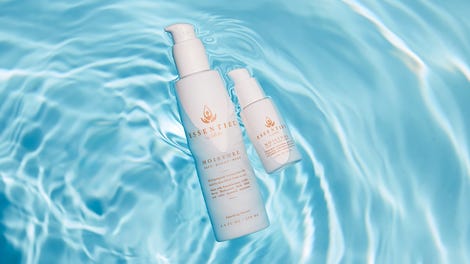The Last Of Us Tess tendril kiss
Written by on January 25, 2023

[Spoiler warning: The following discusses events from the second episode of the first season of The Last Of Us. If you haven’t seen it, you may want to wait until you have before reading on.]
Whether you’ve played the game or not, the end of “Infected”—the second episode of HBO’s The Last Of Us—had to come as a shock. Although the tragic death of Tess (affectingly embodied by Anna Torv) unfolds in a similar way early on in the game, what happens to her after she reveals to Joel and Ellie that she’s been infected is a very different story. No one could have predicted the creepy way Tess would go out on the show. We all had to watch that gag-inducing fungal kiss of death for the first time together, and for anyone with an aversion to such things (this author included) it was truly horrifying.
Even worse, the director of the episode—none other than co-executive producer and creator of the game himself, Neil Druckmann—had the audacity to film it as an almost dreamy, romantic moment between Tess and the infected host. It was as if the invasive lifeform taking over her body was seeking out a connection to its own kind, keeping her frozen in place while the last remnants of her consciousness anxiously flicked that lighter, trying to turn a spark into a deadly flame. It would be beautiful if it weren’t so gross. On HBO’s official The Last Of Us podcast, Druckmann’s co-showrunner Craig Mazin points out that this scene reflects the show’s theme of love and how it functions. “The fungus loves, too,” Mazin says. “It makes more of itself. That’s what we do when we love each other. A lot of us make more of ourselves. That’s how the species is propagated.” Who knew the sex lives of mushrooms could be so fascinating? Craig Mazin, apparently.

For more context as to how we got here, let’s back up. Of all the changes Druckmann and Mazin made for the show, one of the most fundamental was how the fungus spreads in the real world. In some areas of the game where the fungus is heavily concentrated, spores are floating in the air. Anyone passing through (except for Ellie) has to wear a gas mask to avoid getting infected. The creators were worried that audiences wouldn’t buy the premise that these spores were limited to a fixed area, with the cordyceps so widespread (they also didn’t want to put their actors behind masks the whole time), so they did away with the airborne threat for the show. Instead, the fungus is connected by an underground network (based on scientific studies of actual mycelium networks). The infection is now passed on from a bite or via tendrils invading the body through an existing opening, like the mouth.
G/O Media may get a commission

20% off
Essentiel by Adele
Skincare from head-to-toe (literally)
Essentiel by Adele is an all-purpose moisturizer, suitable for body, face, and even the under eye area.
And so, with Tess choosing to remain behind to give Joel (Pedro Pascal) and Ellie (Bella Ramsey) time to get away, she becomes a target of the invading infected. Another difference between the game and the show is that she wasn’t originally fending off a horde of monsters, but a far less intimidating squad of FEDRA goons. At this point in the game, they’ve been chasing the trio ever since their noisy escape from the Boston QZ. After the officers catch up with them at the State House, Tess makes a similar sacrifice. It’s a heroic moment, but not quite as charged, or as skin-crawling, as the way it plays out on the show.

The Last Of Us taps into something deeply unsettling about our relationship to fungal organisms. It’s hard to explain why; it’s just primal. If you feel a little queasy watching the opening credits, that’s a natural reaction. The show also wants us to appreciate the aesthetics of these fungi, the organic colors and shapes that make them unique. There’s no better example of this dichotomy than the scene between Tess and the formerly human host with whom she shares her last kiss. Our instinct is to turn away as those mouth tendrils reach out for her, yet at the same time we can’t help but watch it as it happens. Just like Tess.
We have to credit Anna Torv’s fully committed performance, which works in tandem with the cinematography and framing of the shot to make the scene eerily effective. From the moment we met her in the premiere, Torv put her own spin on the fan-favorite character, giving us a version of Tess who’s tough and in control, but underneath it all longs to believe there’s still hope for humanity. We only had two episodes to get to know her (although she may show up in future flashbacks), but she made a huge impact. Like Joel, we’re not going to get over her untimely demise (or the disturbing way it went down) anytime soon. As players have been learning the hard way since 2013, letting yourself get invested in anyone besides Joel and Ellie in this story is setting yourself up for heartbreak. The one-two punch of losing Sarah (Nico Parker) and then Tess in the first two episodes is a warning to viewers and players alike—you may think you know what’s coming, but you have no idea what’s in store. Thanks for the nightmares, guys.
watch avatar the way of water full movie
watch avatar the way of water full movie
watch avatar the way of water full movie
watch avatar the way of water full movie
watch avatar the way of water full movie
watch avatar the way of water full movie
watch avatar the way of water full movie
watch avatar the way of water full movie





